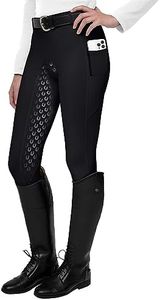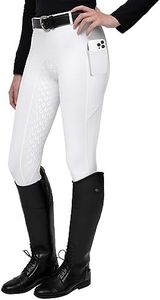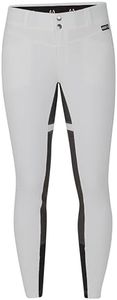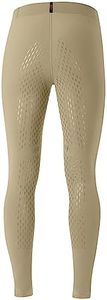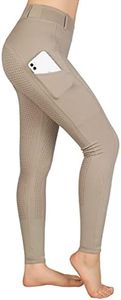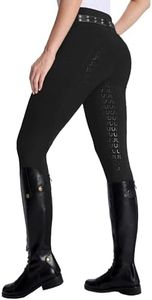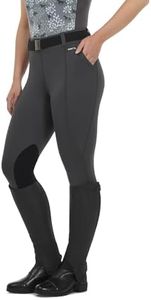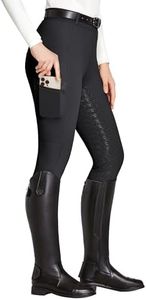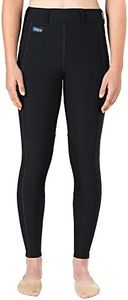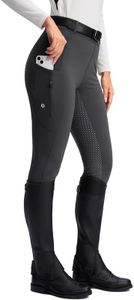We Use CookiesWe use cookies to enhance the security, performance,
functionality and for analytical and promotional activities. By continuing to browse this site you
are agreeing to our privacy policy
10 Best Horse Riding Pants
From leading brands and best sellers available on the web.Buying Guide for the Best Horse Riding Pants
Choosing the right horse-riding pants is crucial for comfort, safety, and performance, whether you're a beginner or a seasoned rider. The right pair will help you move freely, reduce chafing, and ensure you feel comfortable in the saddle for long periods. It's important to understand key features and select the ones that fit your riding style, climate, and body shape.MaterialMaterial refers to the fabric from which the pants are made. This is important because it determines comfort, flexibility, breathability, and durability. Common materials include cotton blends, synthetics like polyester, and specialized stretch fabrics. Lighter, more breathable materials work well in warmer weather, while heavier or lined fabrics provide warmth in colder conditions. Choose a material that matches your usual riding environment and your personal comfort preferences.
FitFit describes how snugly the pants sit on your body. This is important for both comfort and safety, as too-loose pants can cause rubbing or bunching, while too-tight pants can restrict movement. Fits generally range from relaxed to slim or even compression-style. Riders looking for maximum support may prefer a snugger fit, while those prioritizing comfort and freedom of movement might go with a more relaxed style. Trying on different fits will help you find what feels best for your body and type of riding.
Seat and Knee PatchesSeat and knee patches are areas of reinforced fabric, often made of suede or synthetic grip material, that are sewn onto the seat or inner knee area. These are important for providing grip and stability in the saddle. Full-seat patches offer more grip along the entire seat and inner leg, which is popular with dressage riders. Knee patches, on the other hand, give targeted grip and are favored for jumping or general riding. Your discipline or riding activity should guide your choice here.
Waistband StyleWaistband style refers to how the top of the pants fits and is secured. This is important for keeping the pants in place during movement and can affect comfort, especially during long rides. Some pants offer traditional button and zipper closures, while others use pull-on elastic waistbands. If you prefer easy dressing and a smooth look under shirts, a pull-on style might be right for you; if you want a classic, tailored look, go for a waistband with belt loops and closure.
LengthLength describes how far down the leg the pants reach, and it's important because too-short pants can ride up and cause discomfort, while too-long pants can bunch up and interfere with boots. Riding pants usually come in regular, long, and sometimes short lengths, with some stretch at the ankle to fit securely inside riding boots. Pick a length that matches your leg measurement and ensures a smooth fit under your boots, without excess fabric.
Breathability and Moisture-wickingBreathability and moisture-wicking refer to the fabric's ability to allow air flow and draw sweat away from the body. These features are important because they help keep you cool and dry, especially during warm weather or intense activity. Some fabrics are designed specifically for this purpose, while others may feel hot or sticky. If you often ride in warm conditions or sweat easily, look for pants advertised as breathable or moisture-wicking to stay comfortable.
